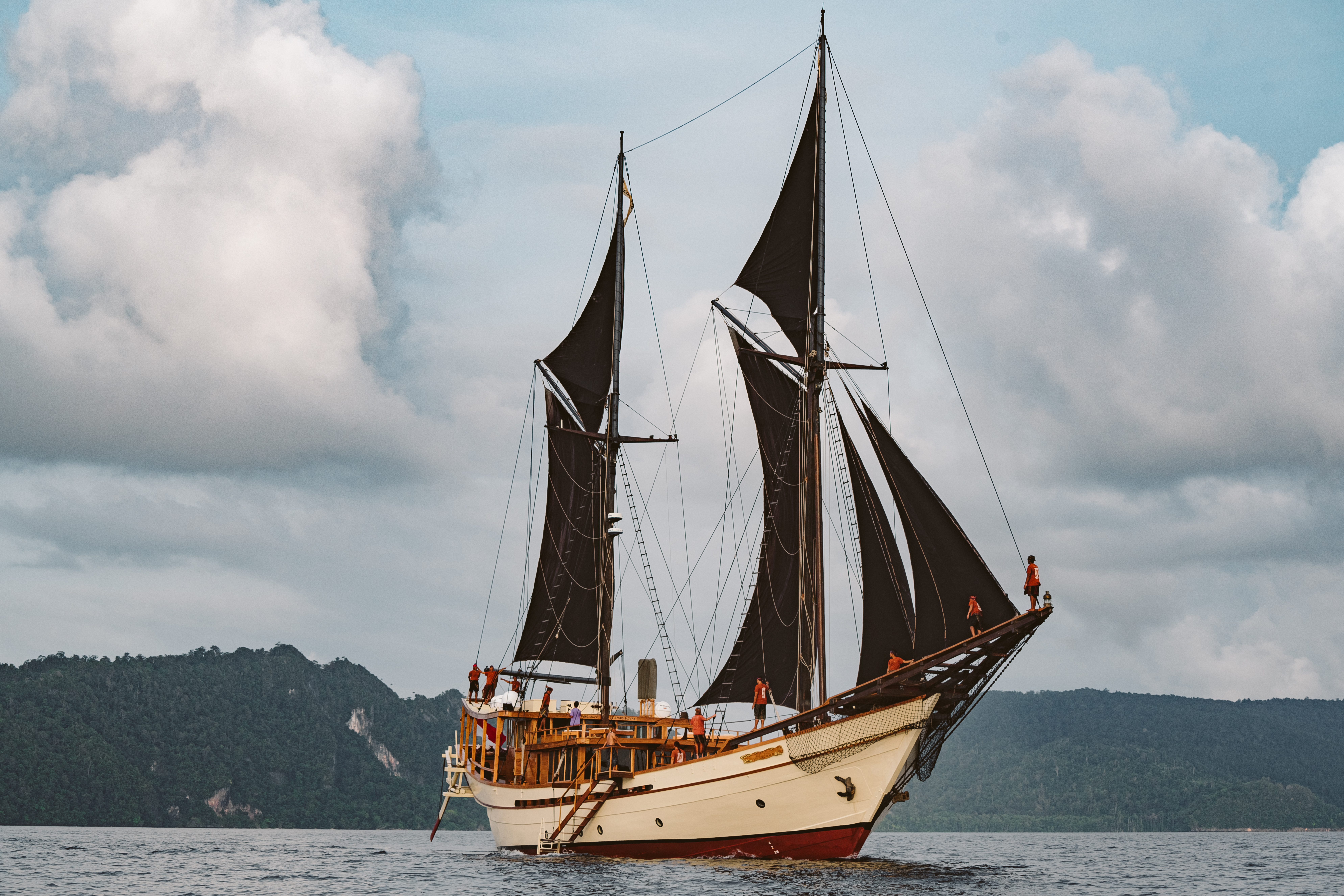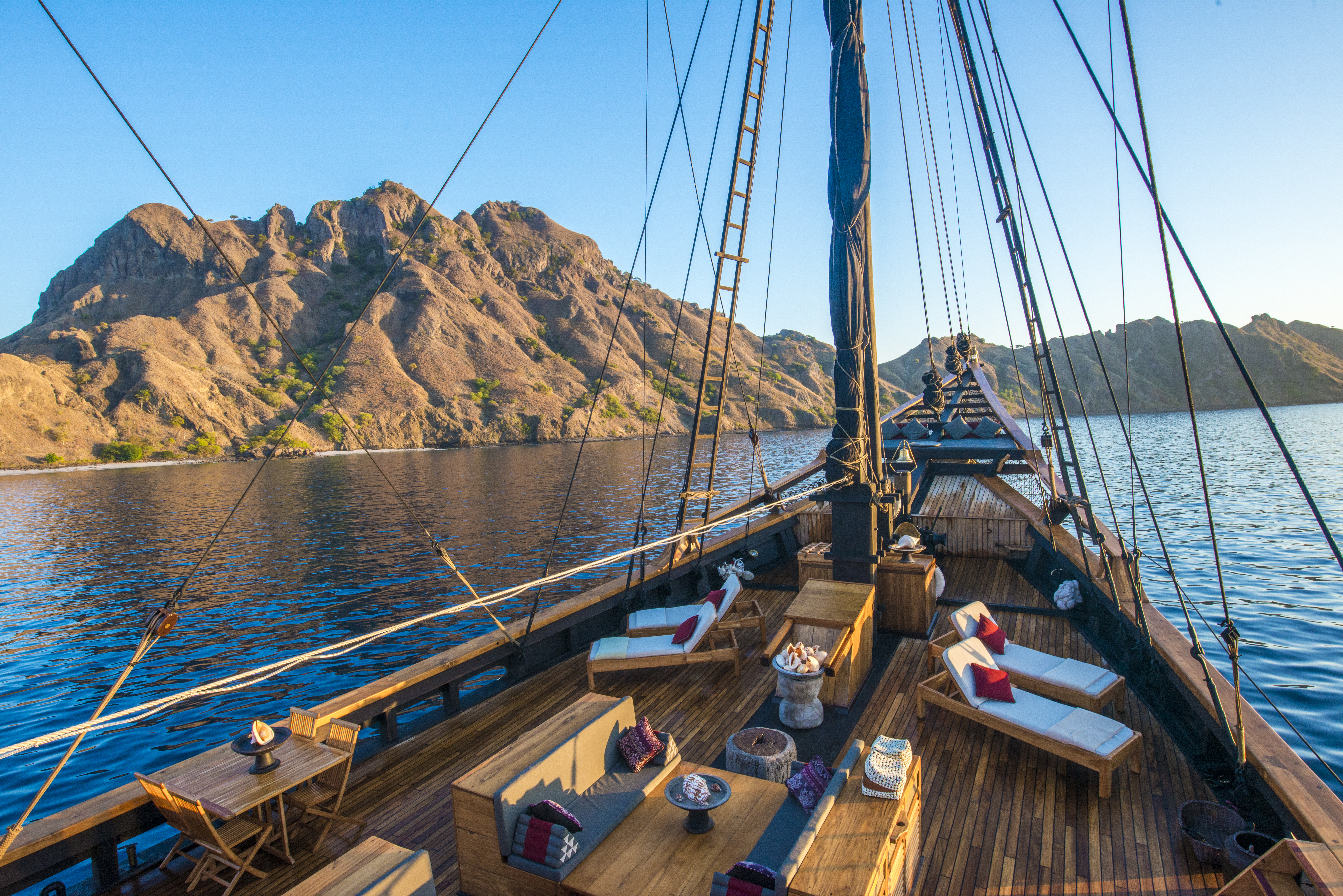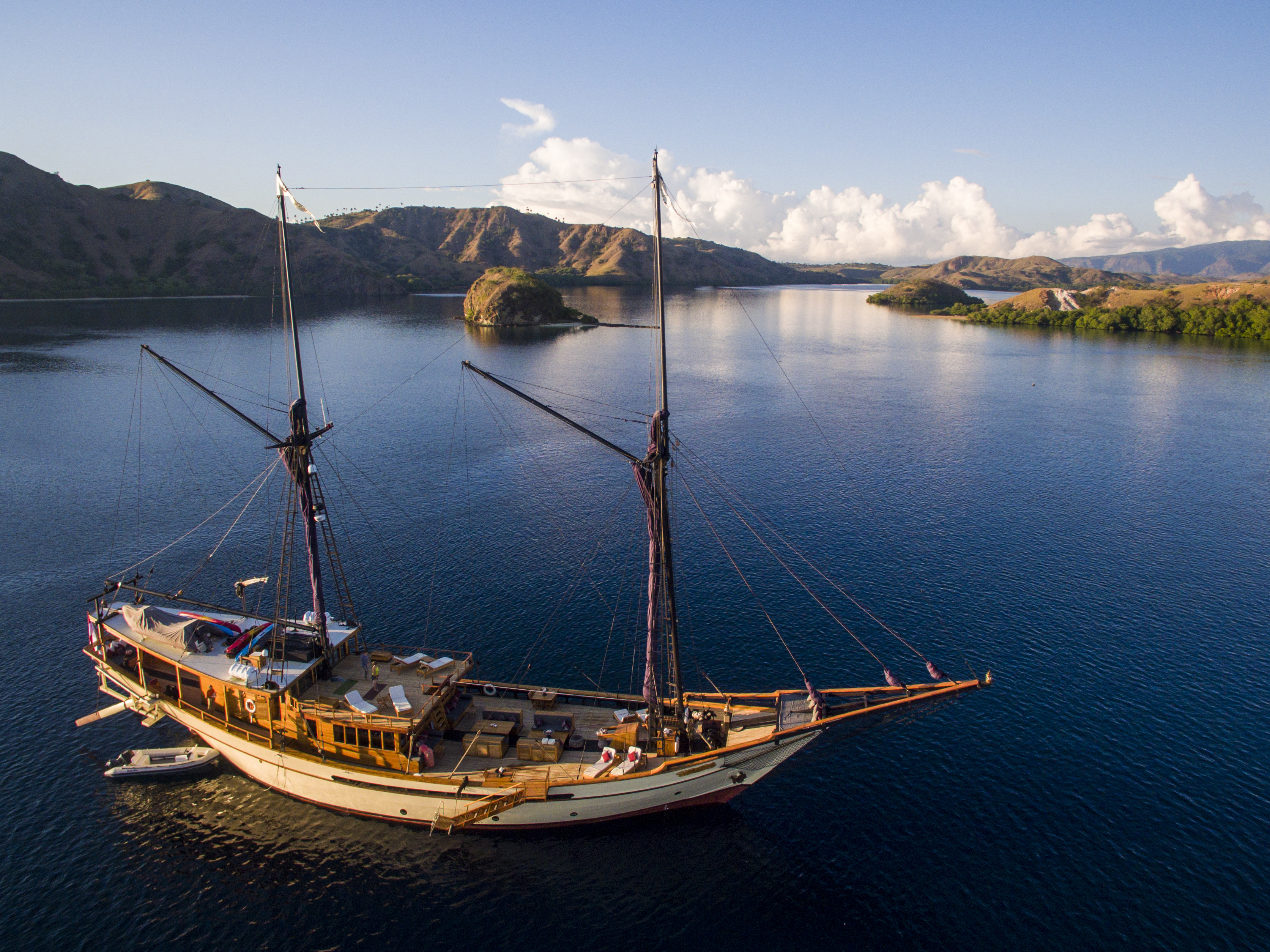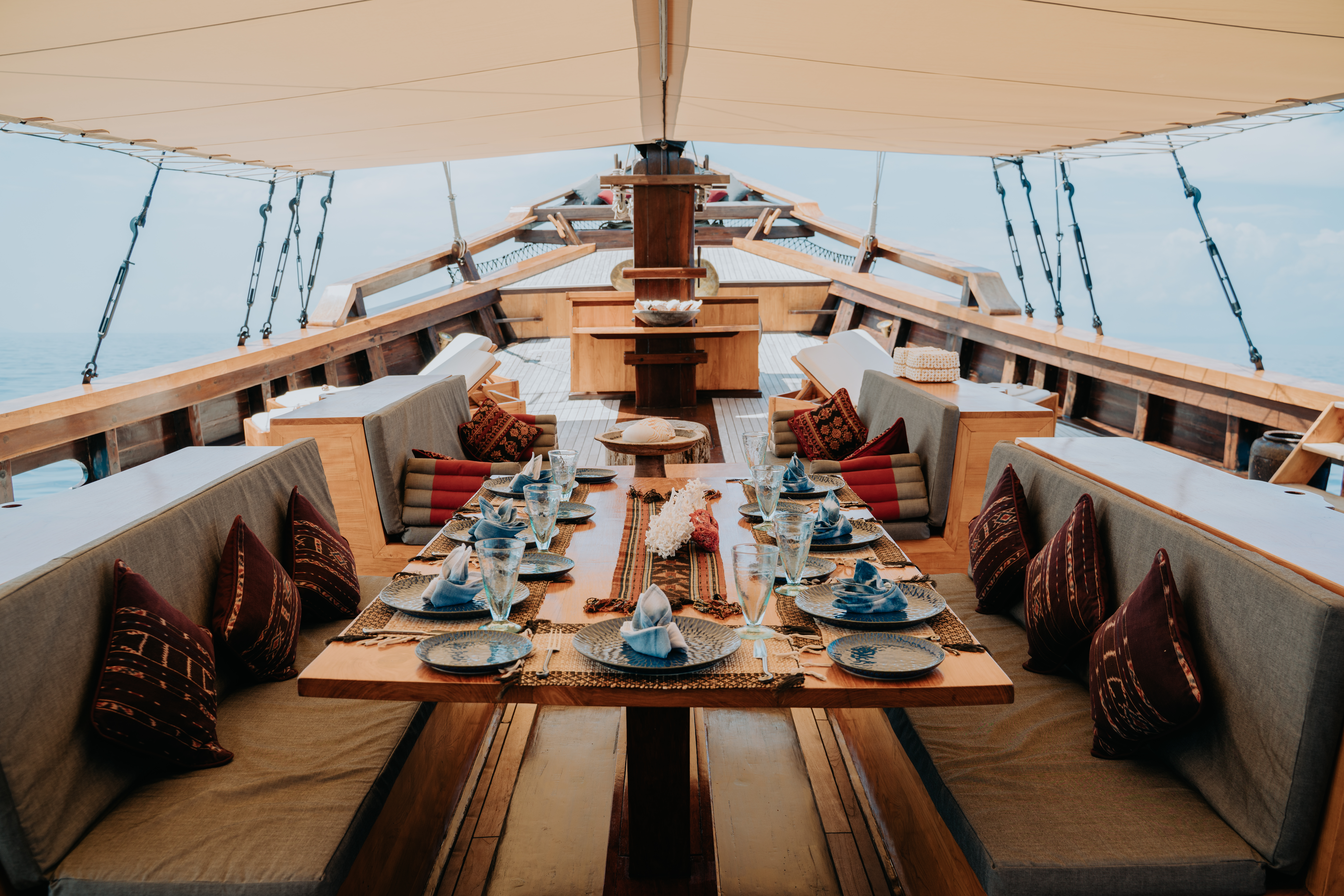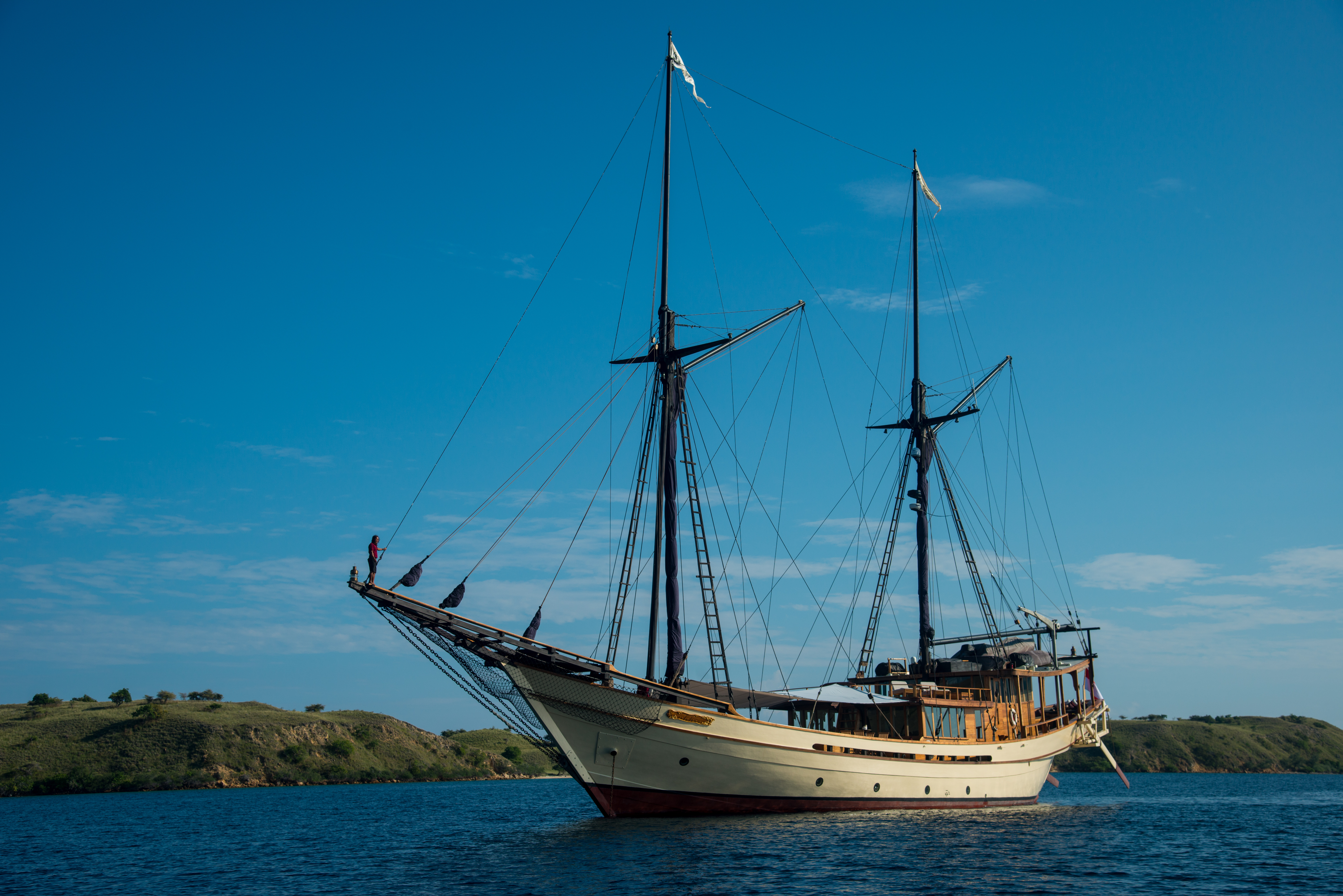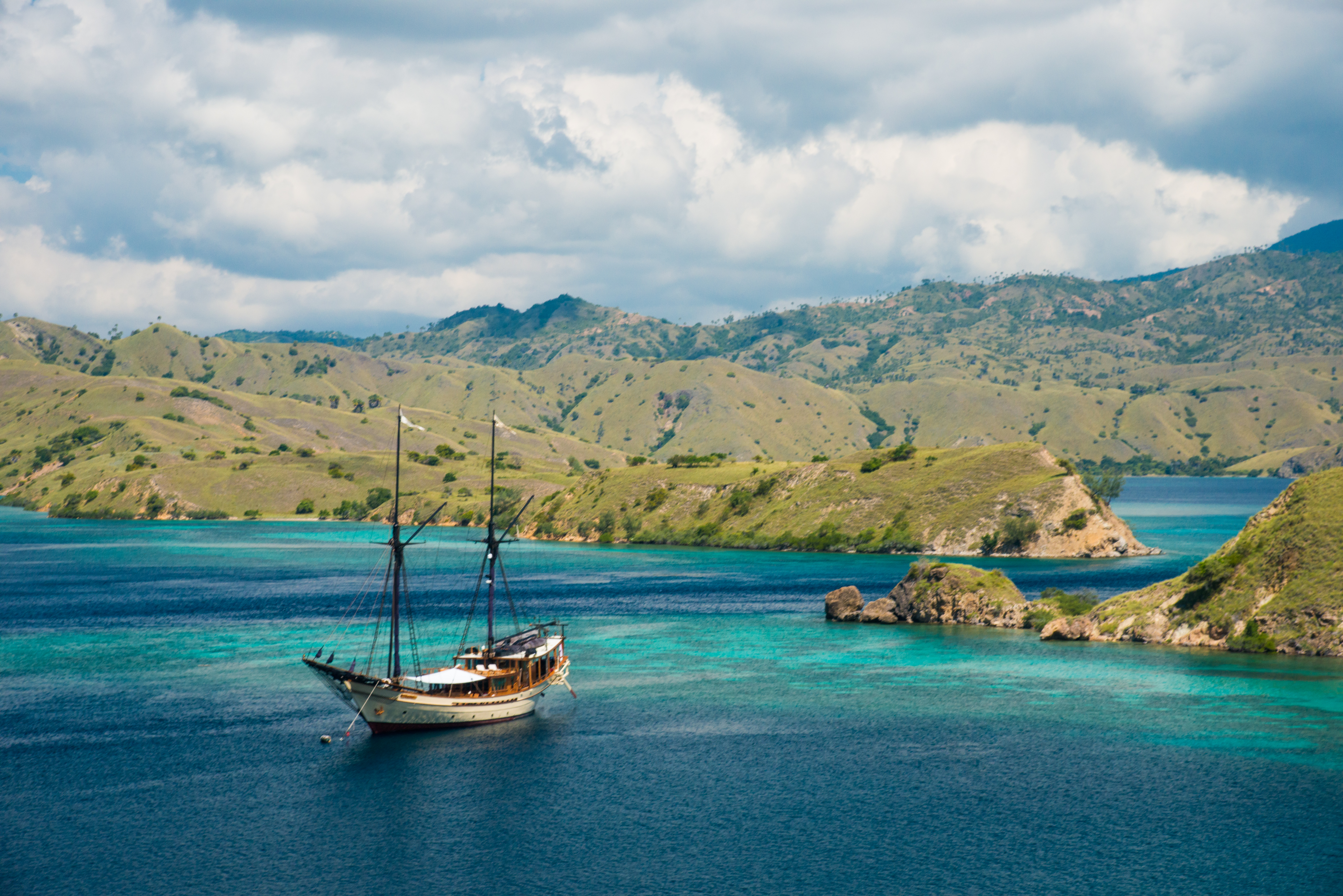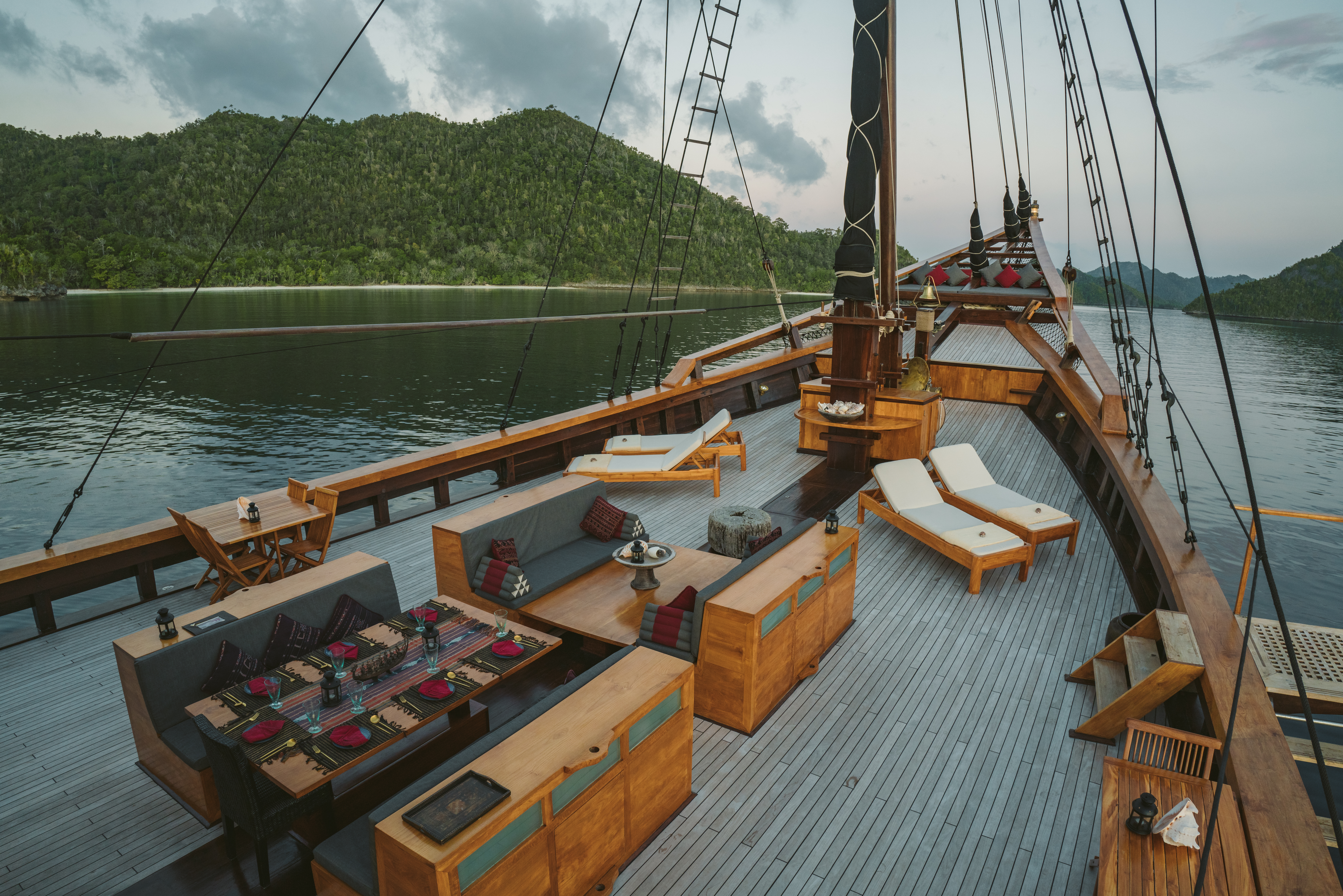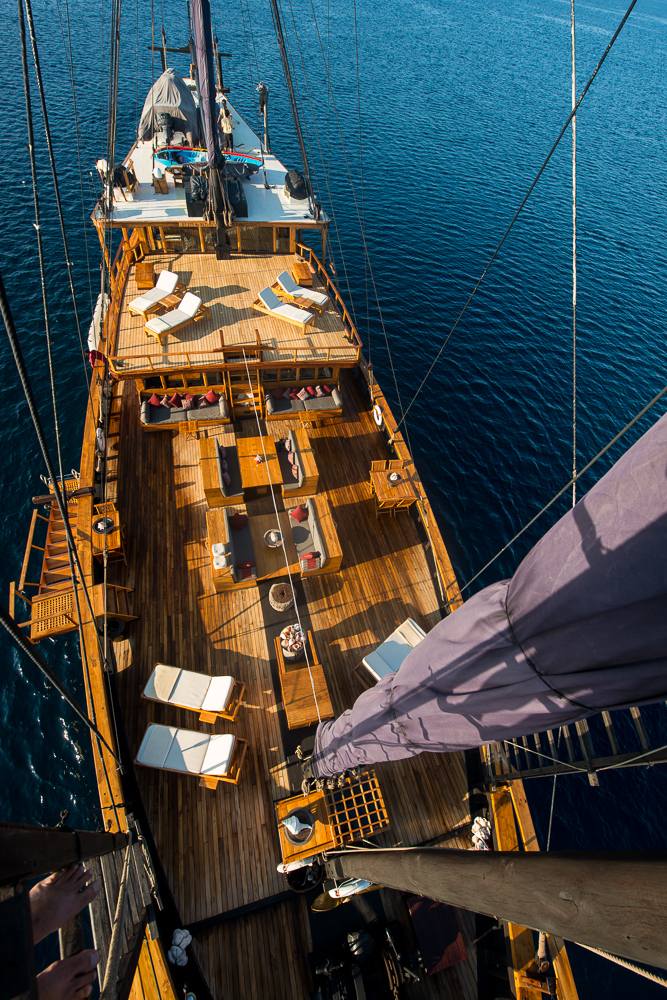Phinisi: Indonesia’s Living Maritime Heritage in the Age of Luxury
A Legacy Carved from Wind and Wood
Across the turquoise waters of the Indonesian archipelago, a Phinisi yacht sails with quiet confidence — its twin masts towering like sentinels of time. To the untrained eye, it’s a beautiful vessel; to those who know its story, it’s a living monument to Indonesia’s maritime soul.
When you set foot on a Phinisi yacht in Indonesia, you aren’t simply embarking on a voyage. You’re entering a story that began centuries ago — one of craftsmanship, courage, and connection to the sea. This is Phinisi heritage: where artistry meets purpose, and luxury becomes an act of preservation.
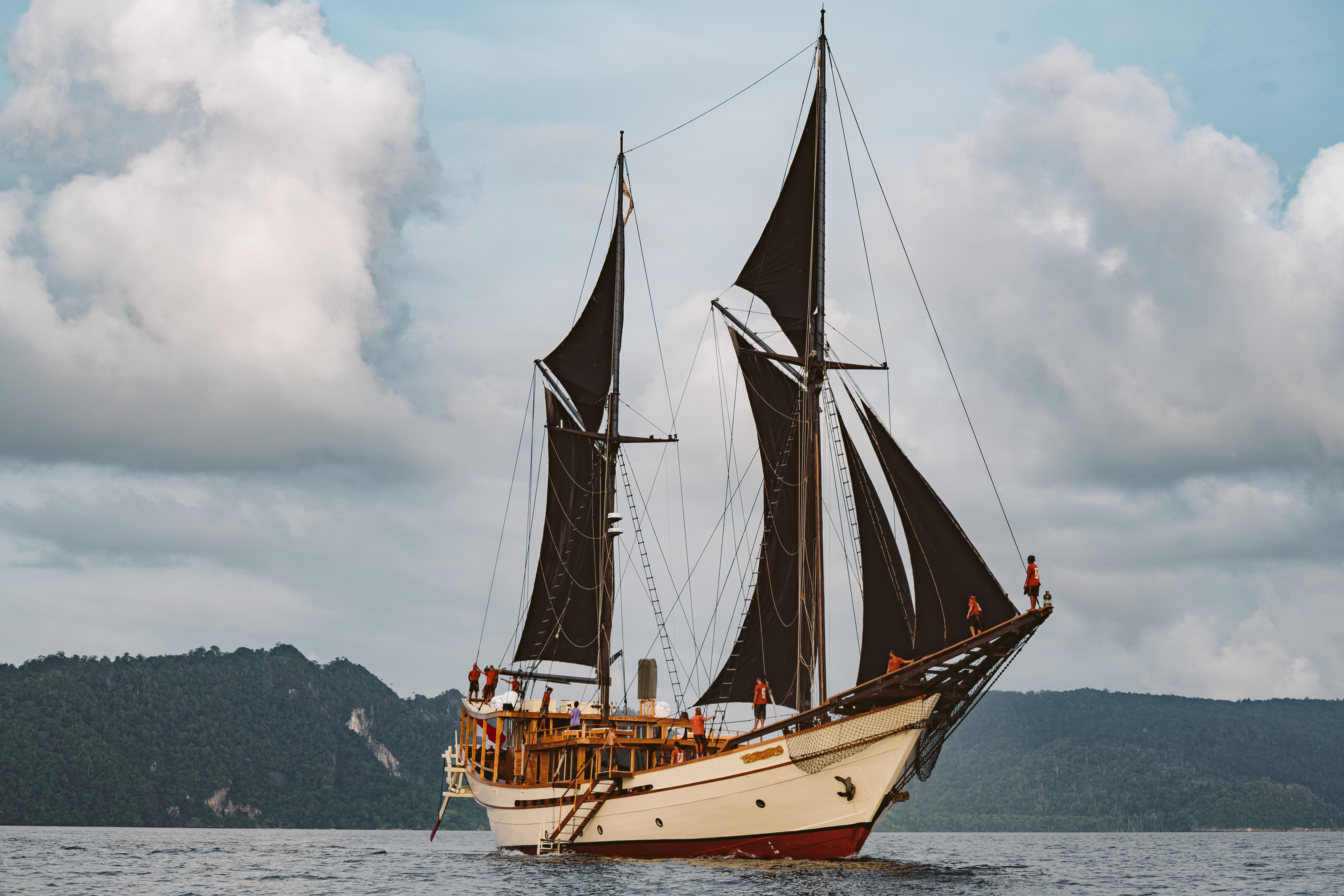
From the Shores of Sulawesi: Birth of a Maritime Masterpiece
The Phinisi’s roots trace back to South Sulawesi, where the Konjo boatbuilders of Bulukumba have, for generations, shaped these vessels by hand. In their culture, a ship is not merely built — it is brought to life. Each stage of construction follows sacred rituals, guided by the stars, moon phases, and ancestral blessings.
Historically, the Phinisi served as a merchant ship, ferrying spices, woods, and textiles between islands. Its distinctive rig — two masts and seven to eight sails — was engineered not for show, but for survival. These sails symbolize the seven seas and eight winds, representing harmony and balance in the voyage of life.
As Indonesia’s trade routes expanded, so too did the reputation of the Phinisi. From the ports of Makassar to the distant coasts of Malacca and Darwin, these vessels became ambassadors of a seafaring tradition unmatched in Southeast Asia.
In recognition of this enduring craft, UNESCO inscribed “The Art of Boatbuilding in South Sulawesi” on the Representative List of the Intangible Cultural Heritage of Humanity (2017) — a global acknowledgment that the Phinisi is more than wood and sail; it’s a vessel of living culture.
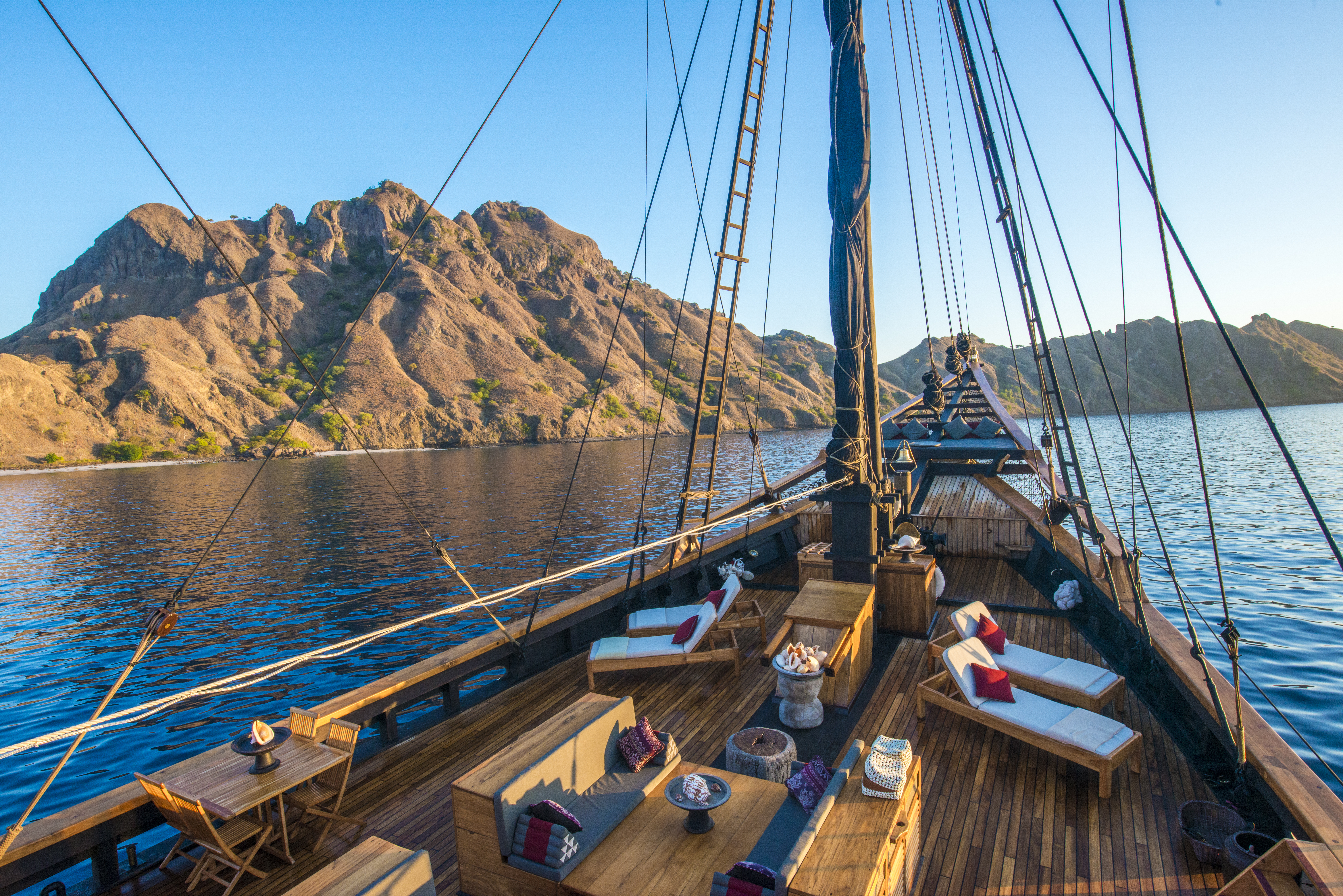
The Art and Architecture of a Phinisi
The true elegance of the Phinisi lies in its fusion of engineering precision and intuitive artistry. Unlike Western schooners, which rely on symmetrical rigging, the Phinisi’s design flows organically with the timber’s natural form. Its hull — traditionally made of Indonesian teak and ironwood — is crafted entirely by hand, without blueprints.
Every piece of wood is shaped by feel, every joint sealed through intuition passed down through generations. A study published in the Journal of Maritime Archaeology (2020) describes this method as an “unbroken dialogue between craftsman and material,” highlighting how indigenous builders achieve seaworthiness through balance rather than measurement.
Aboard a Phinisi, even the sails carry symbolism. The configuration reflects the duality of existence: strength and flexibility, human will and natural force. This harmony of function and meaning is what sets the Phinisi apart from any other vessel on Earth.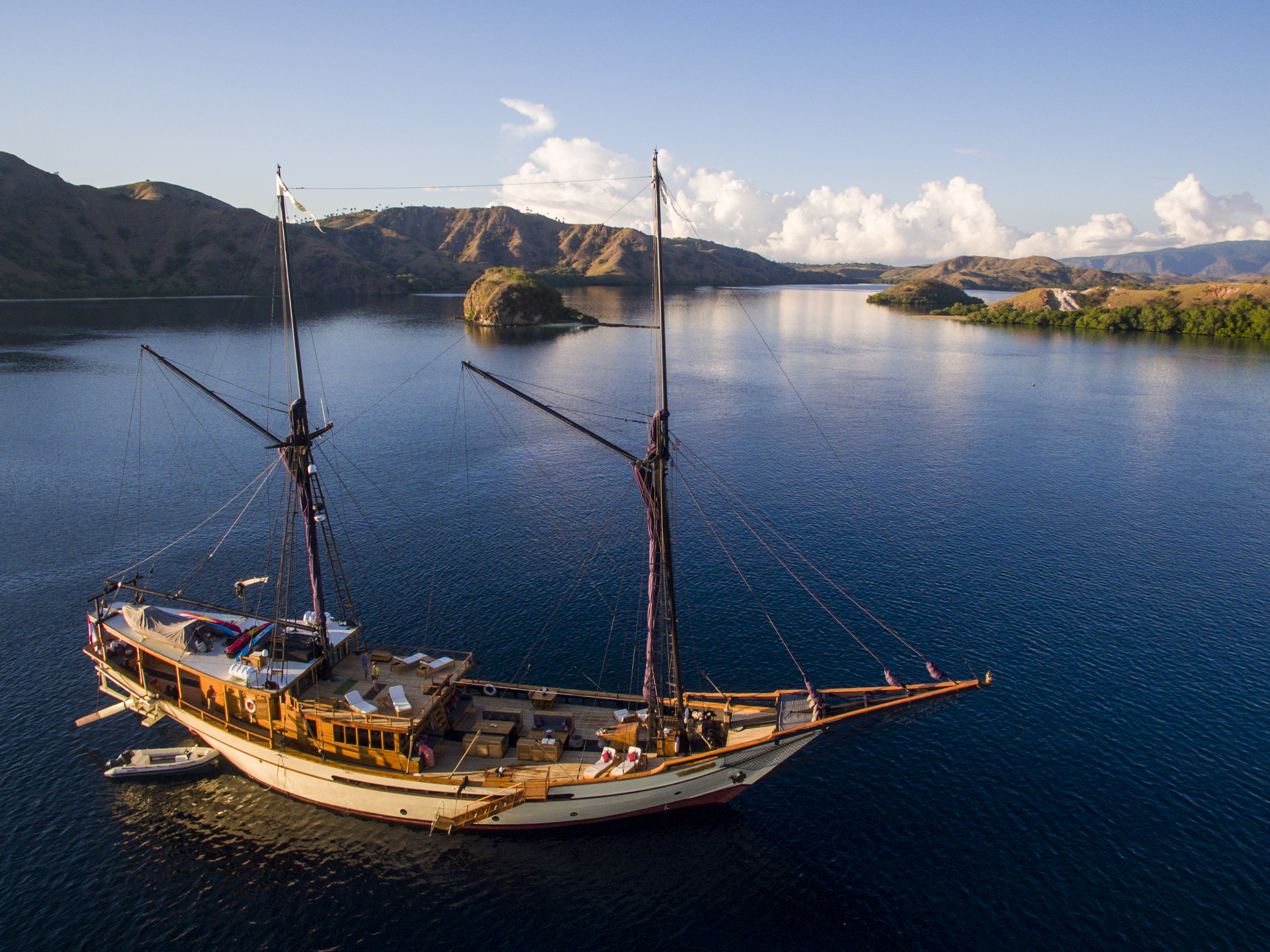
Transformation and Timelessness: From Cargo Vessel to Cultural Icon
By the 1970s, as engines replaced sails, many traditional ships disappeared from the seas. But the Phinisi — ever adaptable — found a new purpose. Visionary craftsmen and explorers began transforming these vessels into floating sanctuaries of comfort and beauty.
Today, the modern Phinisi yacht embodies the perfect blend of heritage and innovation. Inside its handcrafted hulls are teak-panelled suites, spacious lounges, and open decks designed for meditation, dining, or quiet contemplation beneath the stars.
Yet beneath the luxury lies authenticity. Every modern adaptation honors its origin — the craftsmanship of the Konjo builders and the spiritual relationship between people and ocean. According to The International Journal of Cultural Heritage Studies (2022), adaptive reuse of traditional crafts like the Phinisi “preserves intangible heritage while enabling sustainable tourism growth.”
Sailing aboard one is more than indulgence; it’s participation in a living continuum.
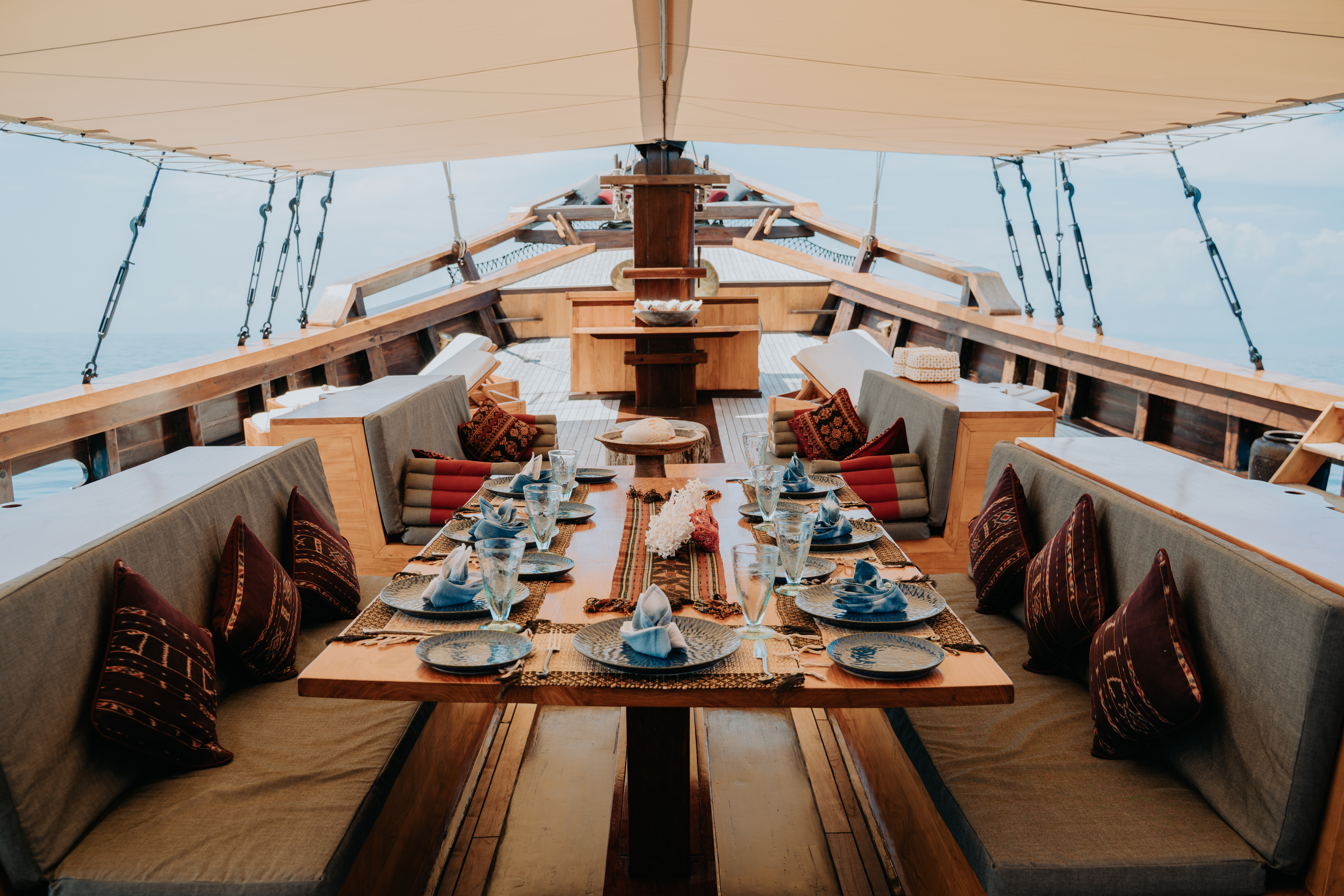
Phinisi vs. Superyacht: The Difference Between Luxury and Legacy
At first glance, a Phinisi might seem comparable to a superyacht. Both offer privacy, comfort, and the allure of open water. But look closer, and the distinction becomes profound.
A superyacht is an expression of technology and modern opulence. A Phinisi yacht, in contrast, embodies heritage and human touch — where every curve of the wood and every line of the sail tells a story.
Here, luxury is not measured in marble or chrome, but in meaning: the sound of waves against hand-carved teak, the scent of sea and wood, the rhythm of wind through sails crafted in the same way for generations.
This is not just travel. It’s transformation — a slower, deeper way to explore Indonesia’s thousand islands, one horizon at a time.
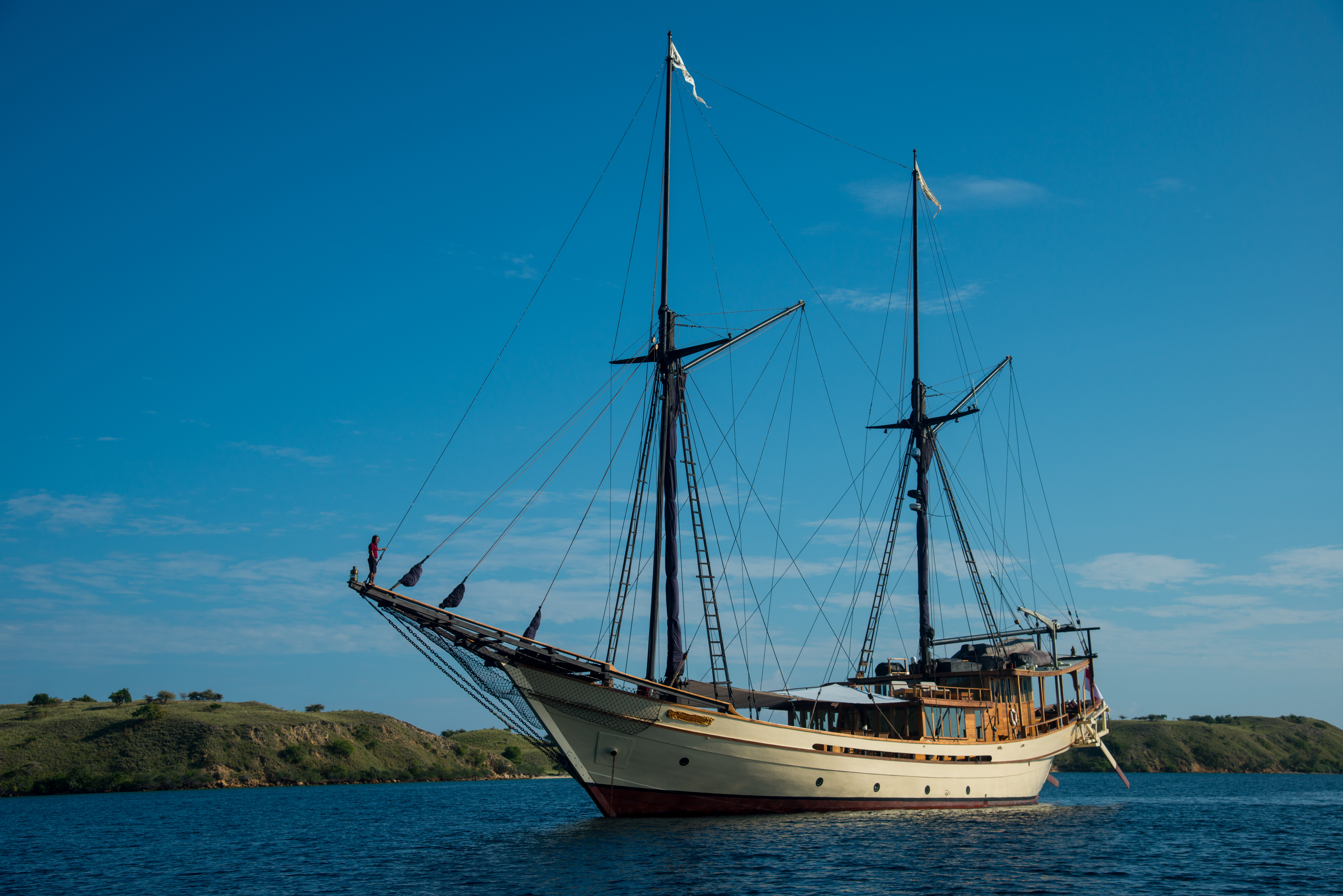
Why the Phinisi Matters to Indonesia’s Cultural Identity
The Phinisi remains central to Indonesia’s maritime identity. It represents centuries of collaboration, craftsmanship, and cultural continuity — values deeply woven into the nation’s character.
For the Konjo people, boatbuilding is not a profession; it’s a spiritual calling. For the nation, it’s a living symbol of connection — between islands, between cultures, between past and present.
As noted in the Journal of Heritage Tourism (2021), authentic cultural experiences enhance not only traveler satisfaction but also the preservation of heritage and local livelihoods. When you sail on a Phinisi, you contribute directly to this preservation — supporting artisans, communities, and an ecosystem of traditional knowledge that might otherwise be lost.
That is why the Phinisi isn’t just a vessel. It’s an act of remembrance, resilience, and rebirth.
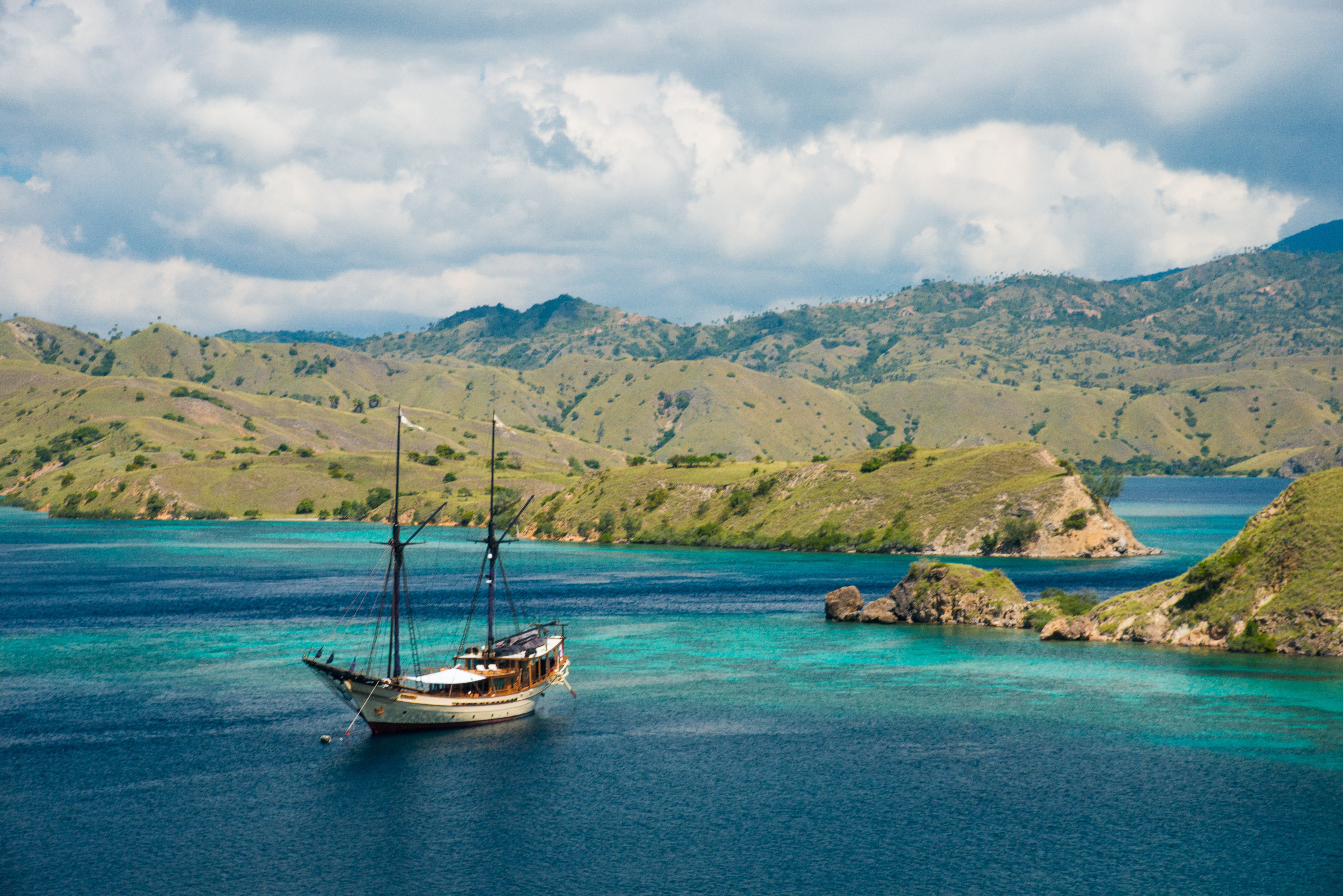
Sailing into the Future: The Phinisi in the Age of Conscious Luxury
As the world turns toward sustainability and mindful travel, the Phinisi stands as a model for responsible luxury. Every voyage connects the comfort of modern hospitality with the conscience of cultural preservation.
Each handcrafted yacht — whether exploring Raja Ampat’s coral labyrinths, Komodo’s rugged shores, or the spice-scented Banda Islands — offers something rare in today’s travel landscape: depth. You’re not just sightseeing; you’re participating in the living narrative of Indonesia’s maritime heritage.
With renewable materials, low-impact design, and deep cultural respect, the Phinisi continues to embody the spirit of harmony it was built upon centuries ago. It’s proof that true luxury lies not in excess — but in authenticity, artistry, and awareness.
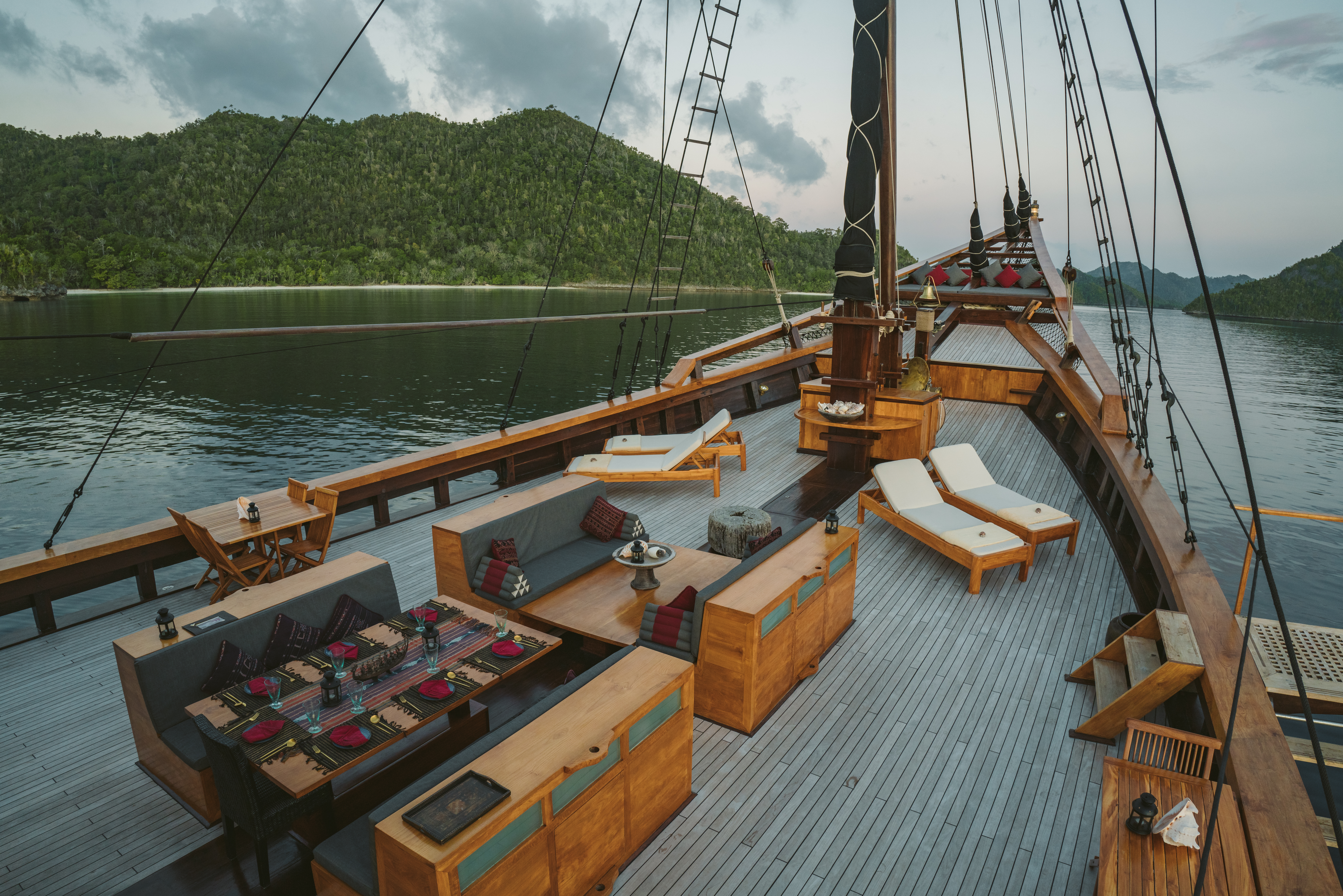
Experience Authentic Phinisi Heritage with Silolona Sojourns
For those who seek journeys that transcend time, Silolona Sojourns offers more than a charter — it offers a passage into meaning.
As Indonesia’s leading private luxury yacht specialist with over 30 years of expertise, Silolona Sojourns curates voyages where every detail — from onboard service to cultural immersion — reflects the soul of the archipelago.
Here, you’ll sail aboard handcrafted Phinisi yachts designed with reverence for tradition and a commitment to sustainability. You’ll dive among coral gardens in Raja Ampat, visit remote island communities, and dine beneath the stars as sails billow above — reminders that heritage, when cherished, becomes eternal.
With Silolona, every voyage becomes a story — one written by the sea, guided by craftsmanship, and remembered for a lifetime.
FAQ
What is a Phinisi yacht?
A Phinisi yacht is a traditional wooden sailing vessel from South Sulawesi, Indonesia, built by the Konjo boatbuilders. It features two masts and multiple sails, combining cultural symbolism and maritime engineering, now reimagined for luxury travel.
Why is Phinisi important to Indonesian culture?
It represents Indonesia’s maritime heritage, showcasing centuries of craftsmanship, community collaboration, and cultural philosophy rooted in harmony with the sea.
Is Phinisi recognized by UNESCO?
Yes. In 2017, UNESCO listed “The Art of Boatbuilding in South Sulawesi” as part of its Intangible Cultural Heritage of Humanity, acknowledging the Phinisi as a living cultural practice.
While a superyacht emphasizes technology and opulence, the Phinisi focuses on authenticity, craftsmanship, and a soulful connection to the ocean — offering luxury defined by experience rather than extravagance.
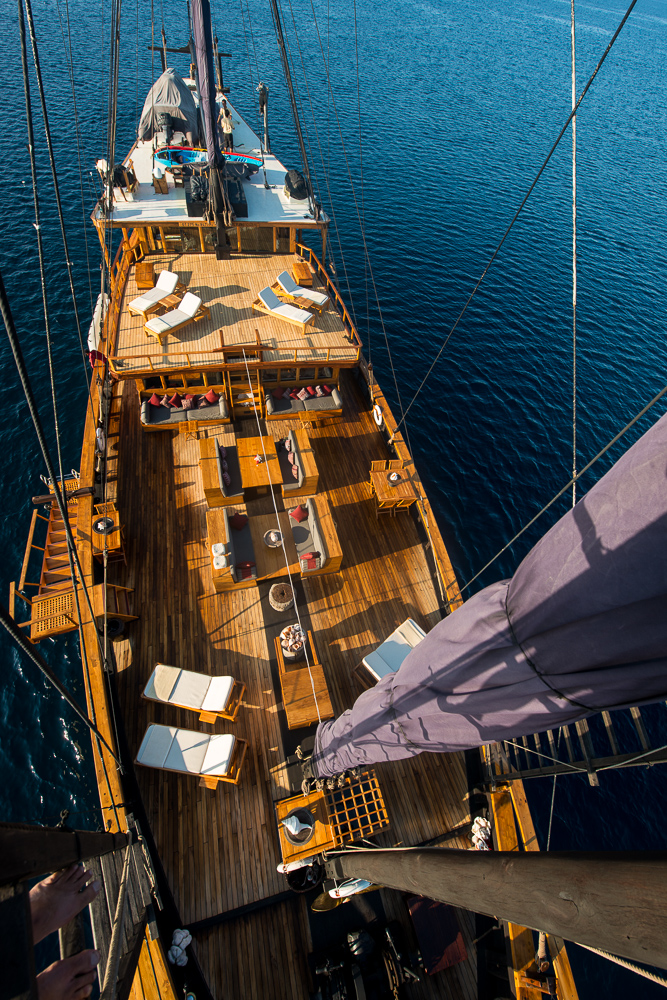
Citations
Journal of Maritime Archaeology (2020): “Indigenous Boatbuilding and Maritime Adaptation in Southeast Asia.”
International Journal of Cultural Heritage Studies (2022): “Sustainable Preservation through Adaptive Traditional Architecture.”
Journal of Heritage Tourism (2021): “Authenticity and Emotional Engagement in Community-Based Cultural Experiences.”


